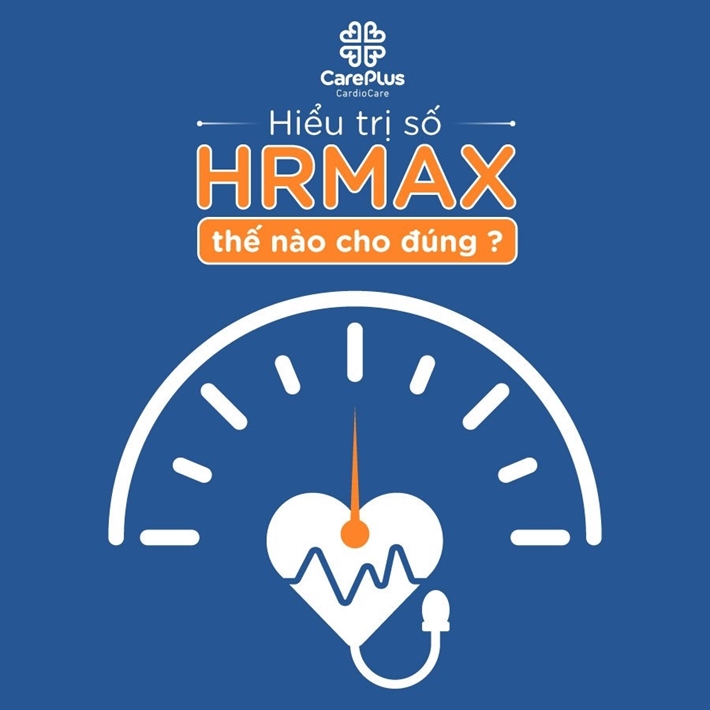How to calculate HRMax correctly?
Most electronic fitness trackers have an HRMax maximum heart rate warning. The index is calculated based on the formula [Maximum heart rate = 220 - age]. For example, if you are 30 years old, HRMax is 190 times/minute. When you're exercising, and there's a warning, do you need to stop immediately?

6/26/2021 12:34:59 PM
1. The maximum capacity of the heart in each person is not the same. It depends on many factors, including age, genetic characteristics, metabolic rate, metabolism, and exercise ability.
The concept of Maximum Heart Rate was coined initially to estimate the work of the heart in the Exercise Test. The HRMax value is not intended to be a specific limit for athletes.
2. During exercise, muscles need a lot of energy to function. Corresponding to the intensity of exertion, the body also changes the way it produces power, from burning fat (Aerobic zone) at a moderate level to using sugar stored in cells (Anaerobic zone) at a heavy story.
Professional athletes who measure this metabolic rate must use the very complex CPET method. For non-athletes, heart rate is used as a simple way to estimate metabolic rate. Fitness wearables set the respective heart rate zones as a percentage of HRMax as follows:
- Heart rate 70-80% HRMax (Aerobic zone): This is the heart rate zone when exercising and maintaining it for a long time to help lose weight and improve cardiovascular health.
- Heart rate reaches 80-90% HRMax (Anaerobic zone): The heart rate zone where the body can't use oxygen in time and must use sugar stored in cells to create energy fastest.
- Heart rate reaches 90-100% HRMax: the state of maximum exercise, also known as the movement ceiling.
3. A heart rate that hits the HRMax range doesn't mean your heart is in the danger zone.
If you exercise regularly, with the correct method, your heart can reach this area without incident. However, it's not the heart rate that hits the threshold, but the TIME DURED IN HRMAX that is a reflection of your fitness.
For example, a professional athlete can maintain a heart rate in the HRMax zone for about 3-4 minutes; an amateur but well-trained athlete can keep this heart rate zone for 1-2 minutes. Even people who don't exercise regularly can reach this level in 10 seconds.
4. For the amateur sportsman, you need to pay special attention to listen to the SYMPTOMS that appear when HRMAX is reached.
You must stop immediately if you feel chest pain or feel pressure in your chest, find it difficult to breathe, can't speak 2-3 words at a time, feel dizzy, dizzy, and want to faint. The HRMax zone is not for you right now. You need to consult with your doctor to choose the right level of exercise.
Conversely, if there are no symptoms, you can continue to exercise to increase the time to stay in the HRMax area gradually. However, remember to do this carefully, not recklessly.
5. Maintaining the time in the high-intensity zone improves endurance, speed, and even athletic performance for professional athletes.
But if you are not a professional, practice to improve your health, there is no need to try so hard. Cardiovascular benefits do not increase much. Still, on the contrary, the risk of cardiovascular events (myocardial infarction, cardiac arrest) will increase if you subjectively do not listen to your body.
6. In addition, some types of tachyarrhythmias may occur during intense exercise. This type of disease is often more difficult to detect (because the symptoms are not apparent, it is difficult to feel during workout) unless you monitor the ECG during exercise (wear a Holter ECG during exercise or do training). stress electrocardiogram)
In short, when your heart rate reaches the HRMax threshold during exercise and the fitness tracker warns you, you shouldn't be too worried and don't need to stop right away. It would help if you listened to your body's symptoms to know what to do - it's the most personalized warning device for each person.
Training to last longer in the HRMax zone means better fitness. However, don't go after the results and push too hard, as that can increase your risk if you have pre-existing heart disease. You should also check your heart health before you start exercising; always consulting with your doctor before increasing the exercise intensity is an effective way to get the best benefits from playing sports.